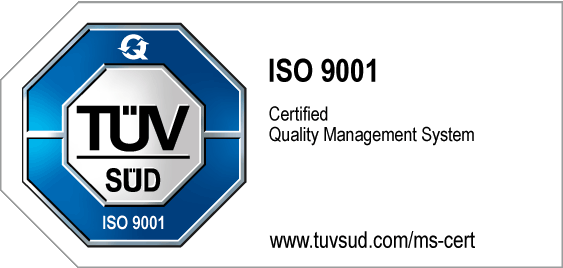Visioning: Effectively Planning Future Strategies
Visioning exercises help participants collaboratively explore and define their ideal future by engaging in creative and strategic thinking.
Visioning – At a Glace
| Importance and Application: | Visioning is crucial as it enables organizations and individuals to define a common vision by setting clear, long-term goals. This process aligns actions and strategies with future aspirations. The visioning exercise creates a mental picture of success, allowing for creative planning and decision-making. This ensures that efforts remain focused on achieving shared outcomes by incorporating key vision elements that resonate with all stakeholders. |
| Conducting the Visioning: | Visioning involves facilitating a collaborative process where stakeholders envision the future of a project, organization, or community. It encourages creative thinking, alignment on shared goals, and strategic planning by helping participants articulate their ideal outcomes and the steps needed to achieve them. |
| Strengths of the Method: | The strength of the Visioning method lies in its ability to foster creativity and innovation by encouraging participants to imagine ideal future outcomes without constraints. It also promotes collaboration and alignment, helping diverse stakeholders unite around a shared vision and common goals. |
| Weaknesses and Challenges: | The challenges of Visioning include the potential for overly idealistic or unrealistic goals, which may lack practical steps for implementation. Additionally, achieving consensus among diverse participants can be difficult, leading to conflicting visions or misalignment in priorities. |
What is Visioning?
Visioning is a process used to create a clear and compelling picture of a desired future. It involves a structured visioning exercise where participants imagine ideal future scenarios and set long-term goals based on shared aspirations. This method is particularly valuable in sectors like international development, where diverse groups collaborate to shape a collective future. Visioning helps guide decision-making and align actions toward achieving that future vision by engaging all the stakeholders.
Why Visioning is important
Visioning is important because it helps individuals and organizations define their long-term goals and create a clear path toward achieving them. By focusing on a desired future, it encourages strategic thinking, innovation, and alignment of actions with broader aspirations. This forward-looking approach fosters motivation, promotes collaboration among other stakeholders, and helps navigate uncertainty toward a common goal.
Steps in the Visioning Process
The steps in the visioning process typically include:
Preparation: Define the purpose and gather participants to ensure diverse perspectives.
Imagination: Encourage participants to envision ideal future scenarios, focusing on goals, values, and desired outcomes.
Articulation: Develop a clear and detailed vision statement that captures the essence of the desired future.
Backcasting: Work backward from the envisioned future to identify the necessary steps and strategies to achieve it.
Action Planning: Create a practical plan with specific actions, timelines, and responsibilities to move toward the vision.
Review and Adaptation: Regularly revisit the vision and plans, adjusting as needed to stay aligned with evolving circumstances.
Common Mistakes in Visioning
Common mistakes in visioning include lack of clarity, where the vision is too vague or abstract, making it difficult to translate into actionable steps. Another error is focusing too much on the present rather than imagining bold, future-oriented possibilities. Excluding key stakeholders can lead to a narrow or incomplete vision that lacks broad support. Additionally, failing to connect the vision to realistic goals and resources can result in aspirations that are unachievable. Finally, neglecting regular review and adaptation makes the vision static, preventing it from evolving with changing circumstances.
Tips and Best Practices
Here are some tips and best practices:
- Involve diverse stakeholders: Engage a wide range of participants to ensure varied perspectives and buy-in.
- Focus on the future, not the present: Encourage participants to think creatively and avoid being limited by current challenges or constraints.
- Be specific and clear: Craft a vision that is detailed and inspiring, yet actionable, providing a clear direction.
- Ensure alignment with core values: Make sure the vision reflects the organization’s or group’s values and long-term objectives.
- Review and adapt regularly: Treat the vision as a living document, revisiting it periodically to ensure relevance and adaptability in response to changing environments.
Frequently asked questions and answers
A visioning session is a structured workshop where participants collaborate to create a shared vision of the future. During the session, individuals or groups explore their aspirations, brainstorm future scenarios, and define long-term goals. The outcome is a clear and compelling vision that guides future decision-making and strategic planning, often serving as a foundational development activity in organizational or community planning.
The concept involves imagining an ideal future and developing a clear, strategic picture of what success looks like over the long term. It encourages creative thinking and helps individuals or organizations align their actions with future aspirations. By defining a compelling vision, visioning serves as a roadmap for decision-making and goal-setting.
To practice, start by creating a relaxed environment and encouraging participants to think freely about their ideal future without limitations. Facilitate discussions where people share their aspirations, values, and desired outcomes, then collaboratively shape these ideas into a clear and detailed vision. Finally, break the vision down into actionable steps and regularly revisit it to adapt to new circumstances or challenges.
Visioning is crucial for companies because it helps define a clear, long-term direction, guiding strategic decisions and growth. It fosters innovation by encouraging employees and leaders to think beyond current limitations and envision new possibilities. Moreover, a strong vision unites teams, aligning efforts across the organization and motivating employees toward common goals.
It’s important for stakeholders because it allows them to collectively shape a shared vision of the future, ensuring their diverse perspectives are considered. It fosters engagement and ownership, making stakeholders feel invested in the outcomes and aligned with the goals of the project or organization. Additionally, it helps clarify priorities and create a roadmap for achieving long-term objectives.
Sources:
- Kuhnt, Beate/Müllert, Norbert R. (2006): Moderationsfibel Zukunftswerkstätten. Verstehen, anleiten, einsetzen. Ökotopia: Münster
- Pillkahn, Ulf (2007): Trends und Szenarien als Werkzeuge zur Strategieentwicklung. Wie Sie die unternehmerische Zukunft planen und gestalten. Publicis Corporate Publishing: Erlangen
- Simon, Hermann/von der Gathen, Andreas (2002): Das große Handbuch der Stategieinstrumente. Werkzeuge für eine erfolgreiche Unternehmensführung. Campus: Frankfurt/New York
- Weisbord, Marvin / Janoff, Sandra (2001): Future Search – Die Zukunftskonferenz. Wie Organisationen zu Zielsetzungen und gemeinsamen Handeln finden. Klett-Cotta: Stuttgart
- Zur Bonsen, Matthias (1994/2000): Führen mit Visionen. Der Weg zum ganzheitlichen Management. Gabler: Wiesbaden / Falken


